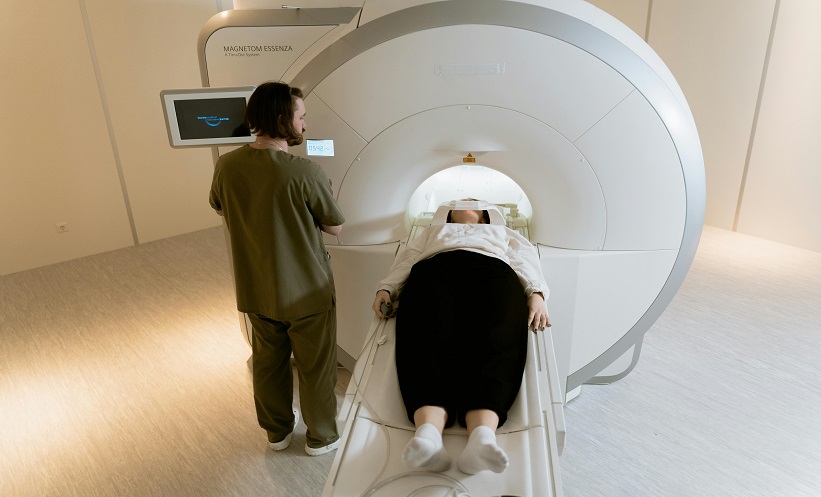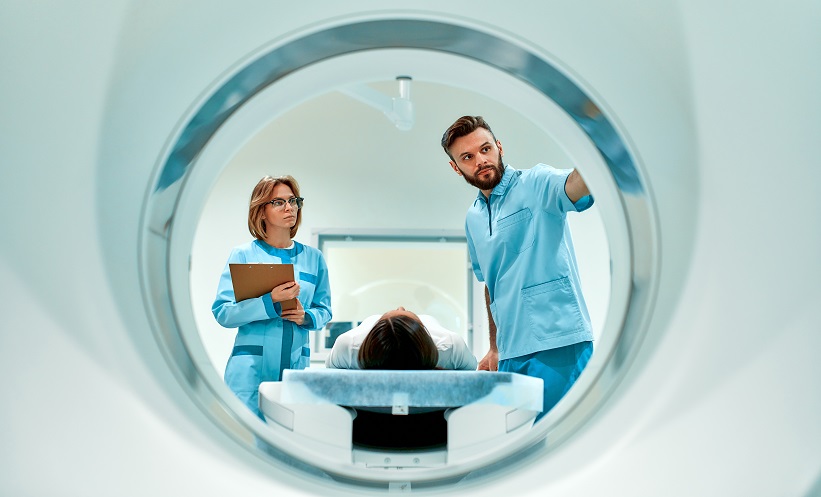Janet Nzisa | Editorial Assistant
![]()
MULTIDISCIPLINARY research is an essential aspect of medical research as it significantly boosts the clinical relevance of a study, with experts from different disciplines coming together to share ideas and, therefore, improve the quality of research. In a session at the European Society of Radiology (ESR) Overture Event 2022, chaired by Boris Brkljačić, Department of Radiology, University of Zagreb, Croatia; and Valérie Vilgrain, Hôpital Beaujon, Université de Paris, France, and Director of the European School of Radiology (ESOR) for the ESR, experts discussed the importance of teaming up with other healthcare professionals from different disciplines and the implications for research outcomes. Additionally, they deliberated on the skills that are required to successfully deliver multidisciplinary clinical research projects.
Vilgrain started by emphasising that multidisciplinary clinical research has a higher clinical relevance and helps speed up further research, even though it might not always be smooth. She went on to explain that the elements of successful multidisciplinary research are using or setting up a multidisciplinary network and getting experts on board from the outset. In addition to an enthusiastic team, a framework of a dedicated infrastructure and funding are importance to this success. Using SARAH, a multicentric trial comparing an emerging treatment with a systemic treatment as an example of putting these principles into practice, Vilgrain explained how the team tackled the challenges that arose during the co-ordination of this trial, and how important high level-communication was in this venture.
Continuing, Valgrain emphasised that multidisciplinary research in radiology is essential, enabling research to move from a technical or radiological perceptive to clinical research. In fact, clinical effectiveness and patient outcomes are becoming increasingly important in interventional radiology clinical trials. Vilgrain outlined that multidisciplinary research has a win-win outcome as it significantly improves the quality of research, offers a higher level of publications, and better access to clinical journals. Vilgrain concluded her presentation by emphasising the importance of education and training for scholars in being able to think across disciplines in order to solve complex health issues. It is, in fact, the way forward for care, research, and education, aside from skills, values, and attitudes, which are also highly important.
In discussing the results of a survey on data sharing, Marc Dewey, Department of Radiology, Charité Universitätsmedizin Berlin, Germany, and Research Committee Chair of the ESR, explained that a third of the institutions have done data sharing in the past, which is a higher proportion than expected. An overwhelming 98% of the respondents also said they would be interested in participating in data sharing. Dewey explained that there seems to be a change in culture moving towards collaborating, recognising that harder questions could be answered quicker and more effectively if emerging data were shared and different disciplines worked together. This is, of course, not without its challenges, given the differences in culture and healthcare systems; however, by investing a for a longer time, the results will be much more profound.
Dewey went on to present the results of an ongoing DISCHARGE collaborative and multinational research project, with participants from 18 countries across Europe, which compared cardiac CT with cardiac catheterisation. The healthcare professionals involved in this project were from different backgrounds and disciplines, including cardiology, radiology, general practice, cardiac surgery, public health, and more. The project demonstrated the importance of collaboration and advancement, not only in radiology but also in other fields. Dewey believes that this project, and other collaborative projects, can influence current standards and the quality of future research. In Dewey’s opinion, the most interesting and successful research usually lies at the intersection between disciplines such as basic science, technical developments, mathematical approaches, and clinical science.
Carlo Catalano, Department of Diagnostic Radiology, Sapienza University of Rome Hospital, Italy, and Vice President of the ESR, discussed ways to improve the multidisciplinary approach in radiology. He stressed the importance of training medical students to understand multidisciplinary approaches at the beginning of their medical education, and of introducing the concept of multidisciplinary research by enabling trainees to attend multidisciplinary boards and involving them in clinical trials. Furthermore, Catalano stated that radiology organisations such as the ESR could provide more congress sessions and courses covering different integrated disciplines with radiology. Luis Martí-Bonmatí, Director of Medical Imaging, La Fe University, and Chief of Radiology, Quirón Hospital, Valencia, Spain, agreed, expressing his belief that there is a danger in medicine of staying in your comfort zone and not going outside of your knowledge, as this is the best way to fail in whatever you do. Martí-Bonmatí explained that the process of integrating information in a single project is a full track and “from the beginning to the end we will never succeed alone”. Therefore, an array of experts is needed to succeed, from statisticians, epidemiologists and IT experts, to clinical scientists, pathologists, and radiologists. He further elaborated on this point by explaining that a multidisciplinary author group in a paper is a stamp of quality for him in his editorial capacity. He also emphasised the value for clinicians partnering with industry in clinical trials and introducing communication channels and long-term relationships with industry partners. Catalano added that suitable training and involvement for residents and trainees such collaborations are very important, as collaboration with industry is a demanding task. Bringing this session to the end, the speakers agreed that the future lies in multidisciplinary research, for which effective communication, high-quality training, and collaboration with industry are essential.








